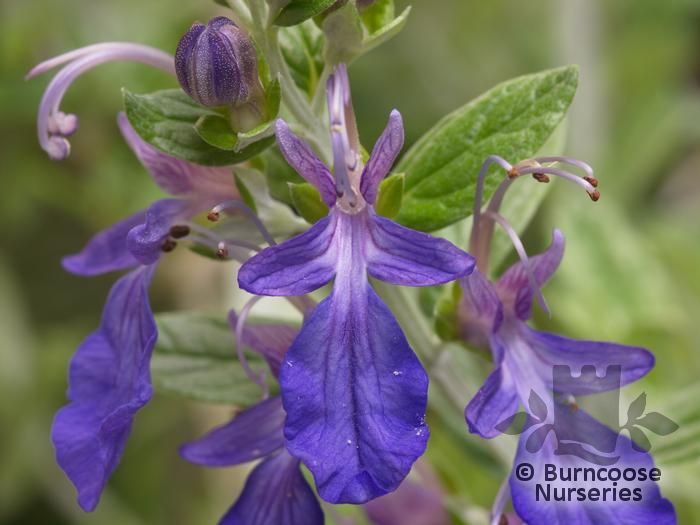Teucrium fruticans 'Azureum', aka Bush Germander 'Azure', makes the cold weather worth it.
I first posted about it back in 2010 when my plant was about 2 years old, and my love for it is still as strong as it's ever been.
Now I feel like a proud parent, too: back in 2009 I had some friends who admired them in my old garden and were looking for xeric plantings. (David referred to it as "the boxy plant". No idea why, but that's what we call it to this day.)
It's a little dicey to recommend plants to people, because you can't control anything about how they execute the planting, watering, etc. I gave them 3 as a gift, figuring no one had anything to lose. Not surprisingly, the Bush Germander 'Azure' have fulfilled every promise I made:
 |
| Teucrium fruticans 'Azureum', with 3' tall outdoor torch in the foreground for scale. |
 |
| Blooms! Crazy numbers of blooms! |
It starts to bloom intensely blue flowers in mid-to-late December, and continues until early February. It's evergreen and silver/gray, NEEDS full sun, and once established it takes complete neglect in stride. (For reference, my friends have zero irrigation.) It gets to be 5-6 ft wide, about 4-5 ft tall, in a semi-fountain form. Bees love it, deer don't seem to care about it, and it doesn't seem to have any disease problems.
I planted some in our new yard when we moved in (Feb 2014), and while this is a lousy shot you can see the size this past August as compared with now:
 |
| (Opposite side, same plant) |
They always seem to get a growth spurt just as Winter hits. The new growth gets a little gangly, so I shape them lightly after they're done blooming. It isn't particular about about that either: I usually pull the new growth up into a "ponytail", and cut. It flops back and retains that rounded shape until the next Winter growth spurt.
They do require watering (weekly for the first month) to get established if you plant in the Spring, but once they're established they're pretty drought-tolerant. (In a related story, if you dig one up and try to transplant it...good luck. I've done it successfully, but I can't recommend it for your back health or the plant health. I seem to recall it had an extensive spider web-y root system, a *#$%! to dig out. It was touch-and-go for about a month in its new location, and then it went back to being impervious to sun and heat.)
I've never understood why anyone uses Russian Sage, Texas Sage, or even the more common variety of Bush Germander when this is a much more attractive option. It's harder to find at local nurseries but not impossible: last year I found lots at Hill Country Water Gardens. It's always available online at Digging Dog Nursery.


What an enticing description! I wish I had full sun in my garden. I'd go on the hunt for a few immediately.
ReplyDeleteI kind of evangelize about this plant, huh? :-) I have to confess that I'm coming to appreciate Texas sage pruned into tree form, however. I think you might have posted about some a few months back in a San Antonio private garden? Now that I'm tuned into them it's like a whole new plant to me!
Delete